PinotFile: 8.6 November 29, 2009
|
New Additions to Willamette Valley Make Wine Touring More EnticingIt is ironic that the modern Oregon wine industry was founded by outsiders, many of whom came from California, yet Oregonians have never been fully receptive to hosting wine tourists. Unlike California, Virginia, New York and New Zealand, Oregon has never developed the infrastructure to comfortably accommodate visitors eager to discover the state’s marvelous wines. The Willamette Valley is an amusement park of Pinot Noir, yet because of a lack of lodging and other tourist amenities in the Valley, many visitors shun staying at the “park,” heading instead back to Portland after a day of wine tasting where ancillary services such as comfortable accommodations, fine dining, and shopping are readily available. Understandably, residents of the Willamette Valley want to preserve their bucolic piece of paradise and maintain their agricultural heritage. However, Oregonians are slowly coming to terms with the reality that tourism can be tastefully integrated into the countrified lifestyle of their communities. Recent lodging and dining additions to the Willamette Valley now offer the wine lover some enticing options. Willamette Valley's Pinot Paradise has now become an attractive destination for the sophisticated wine enthusiast. All photographs in this article are copyrighted and used with the permission of Andrea Johnson Photography (www.andreajohnsonphotography.com). They may not be reprinted or used for advertising purposes.
Inn at Red Hills
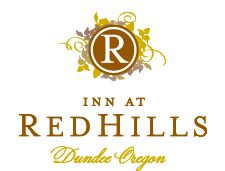 The story of the Inn at Red Hills begins with Dustin Wyant. He grew up in Bend, Oregon, had a successful career as the Sales and Marketing Director for Willamette Vineyards, and later spent twelve years in Montana managing the St. Mary Lodge & Resort at Glacier National Park. He recruited staff from all over the world, managed a seasonal work force of 250 people, oversaw five restaurants and even filled in as a working chef when the chef abruptly departed one summer the day before the July 4 holiday. Upon returning to the Willamette Valley, Wyant envisioned a 60-room luxury hotel built on a farm in the Dundee Hills modeled after the Blackberry Farm in Tennessee and the Herbfarm in the state of Washington. He wanted to offer guests a full immersion in the Oregon farm and wine country experience by surrounding the luxury inn with a working vineyard and winery, a cheese maker, and livestock, poultry, and organic gardens that would supply the on site restaurant with a sustainable source of fresh food. He realized that the Willamette Valley had no professional hospitality to offer the wine traveler touring the region. Wyant connected with a prominent local Oregonian, Kendall Bergström, whose family had left Portland to settle in Dundee in the late 1990s. Kendall’s father, John, a successful surgeon, wanted to return to his childhood agricultural roots remembered as a child in Sweden. He planted Bergström Vineyard and soon after, in 1999, launched Bergström Wines with his son, Josh, handling the winemaking duties. Kendall and her husband Paul de Lancellotti founded de Lancellotti Family Vineyards the same year on top of Calkins Lane in the Chehalem Mountains. In 2001, the Bergström Winery was built on the de Lancellotti property. With both wineries well established, Kendall turned her attention to commercial real estate development. Upon meeting Wyant in 2006, she realized they both shared the vision of creating a casual but elegant hotel and spa in the Willamette Valley. Their search for an appropriate site led them to a 3.5-acre property on Worden Road in the Dundee Hills, a short distance from Highway 99W, the main thoroughfare through Dundee. Together they dedicated six months to lobbying for their hotel in the state legislature in Salem, but their proposed land use was denied. Discouraged, but undaunted, they decided to convert two new commercial buildings in Dundee into Oregon Wine Country’s first full-service boutique hotel. The process of retrofitting the buildings to meet their vision was challenging, but the result has been very impressive. They elected to work with contractors who primarily lived within 30 miles of Dundee and attempted to use green materials such as recycled fiber carpets whenever possible in furnishing the guest rooms.
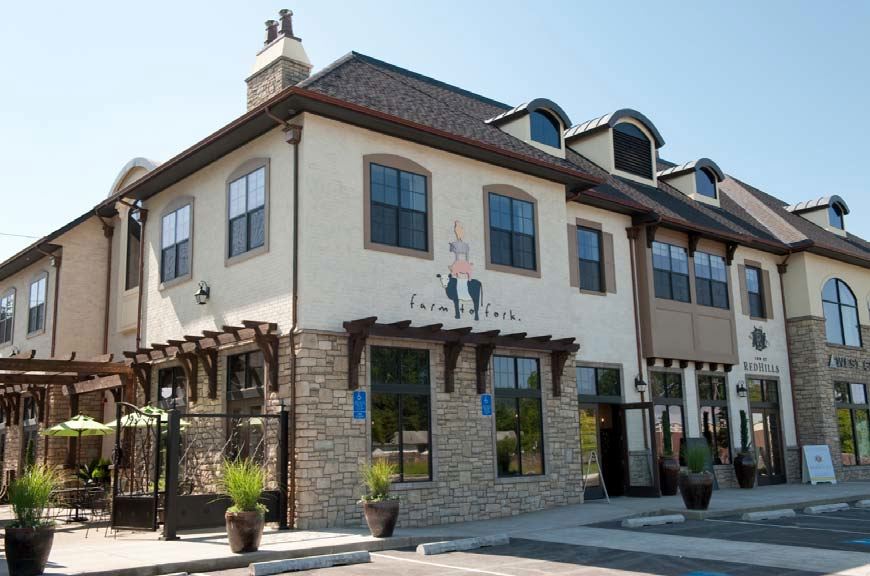 The Inn at Red Hills has 20 distinctive rooms, each with a different size, layout and view. Some rooms are located on the Highway 99W side of the building, but I did not find the traffic noise to be intrusive. The rooms are tastefully furnished with all modern amenities including 40” flat-screen televisions, comfy beds with adjustable firmness, choice of hypoallergenic pillows or down feather blend pillows, well-lit bathrooms, roomy showers, organic bath products, hi-speed internet access, and individual room-operated heaters and air conditioners. The walls are decorated with Oregon wine country photographs by renowned photographer, Andrea Johnson, whose photographs appear in the new book, Passion for Pinot, and who supplied the images for this feature. Her works are also displayed in the Inn’s restaurant. Complimentary morning coffee and tea service is available daily as are bottled water, cookies, and the Oregonian and USA Today newspapers. There is ample free parking, and the Inn’s restaurant, Farm to Fork, is conveniently located a few steps away from the guest rooms removing any worries about driving home after an evening of revelry and Oregon Pinot Noir.
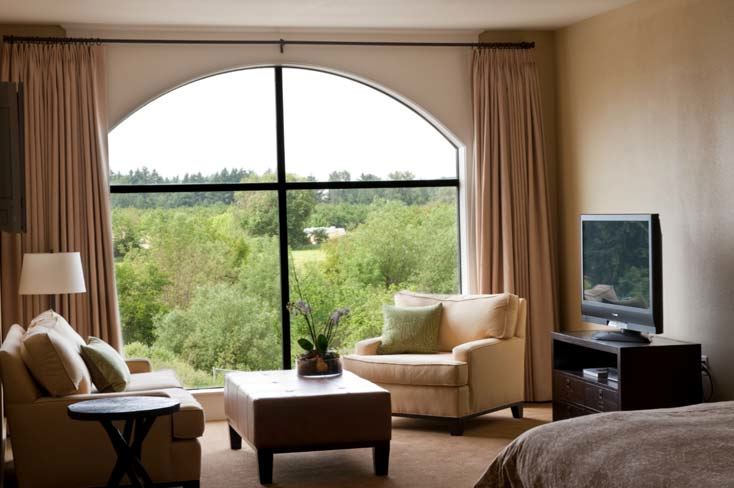 Farm to Fork is billed as a gourmet cafe and market and the description is very apropos. Attempts are made to source all products served in the restaurant from within 250 miles of Dundee, especially those that result from a serious commitment to sustainable, organic and biodynamic farming practices. This insures freshness and emphasizes seasonality as well as displaying the diverse gastronomic bounty of Oregon. The talented chef, Paul Bachand, has been cooking for thirty years in the region and knows the local fishers, foragers, ranchers and farmers. His many contacts show up on the dinner menu as locally grown baby lettuces, herbs and heirloom tomatoes, Carlton Farms pork, Draper Farms chicken, superior Farms lamb, Penn Cove mussels, and artisan Oregon cheeses. In addition, the Wyant and Bergström have a farm at Bergström Winery where they grow black cap berries, blueberries, marionberries, raspberries, vegetables and lavender, all of which are used in the restaurant and hotel. Wyant is such a passionate foodie that he grows twelve varieties of heirloom tomatoes on another plot at his home and serves them in the restaurant. Bachand roasts, smokes and seasons the restaurant’s meats so they are all natural. The restaurant’s deli stocks many local and international artisan cheeses and house-made charcuterie. Much of the food is available for take-out for picnics in wine country, off site catered events, or even in-room dining. Wyant remarked to me about the most impressive feature of Bachand’s cooking. “He avoids fancy and complicated preparations, preferring that the flavors come through.”
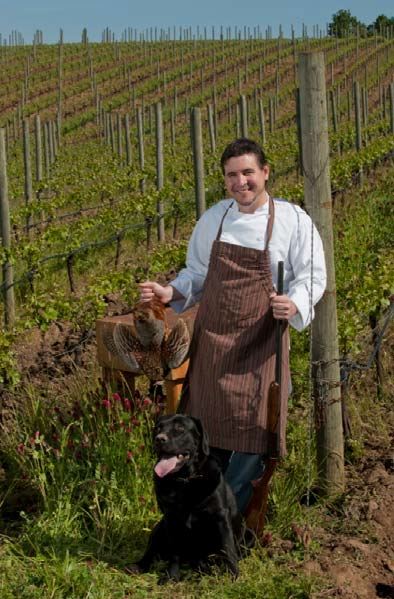 The Farm to Fork gourmet cafe and market is located next to the Inn’s compact lobby and is a bright and comfortable spot to dine. Breakfast, lunch and dinner are served daily. The service is exceptionally prompt and the personnel are professionally trained. Either Wyant or Bergström are always visible in the restaurant, offering guests personal attention and administering to every detail. Outside seating is available in the stone courtyard adjacent the restaurant. Fresh-baked pastries are available each day at 6:00 AM for early risers, breakfast begins at 7:00 AM daily. I loved the hearty breakfasts which included tasty items like Alderwood Smoked Trout and Farm Egg Scramble ($11), Almond Battered Brioche French Toast ($9), and Croque Madame ($11). The dinner menu changes frequently depending on what is farm fresh and locally available but first courses include choices like Warm Truffled Goat Cheese Tart ($9) and Grilled Rabbit Sausage with Pinot Noir Stewed Cherries ($9). Entrees include Wild Coho Salmon with Pesto Basted Fingerling Potatoes ($19), Superior Farms Leg of Lamb with Hazelnut Salbitixada and Charred Sweet Onions ($18), and Roasted Draper Farms Chicken Breast with Yukon Gold Potato Puree ($16). I am beginning to salivate.
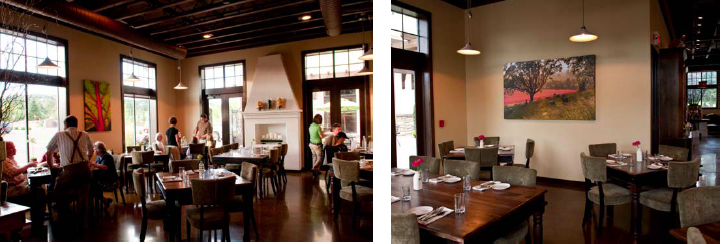 The Press Wine Bar is a focal point of the restaurant with a wall of wine bottles leading to a roomy and inviting lounging area and tasting bar. Manager Mark Bosko has assembled an impressive offering of local Oregon wines, most of which are sourced from growers and/or wineries that are sustainable, organic and biodynamic. Bosko is very knowledgeable and well-connected in the local wine community allowing him to access interesting small lots of wines including older vintages. A rough hewn wood community table that seats 8 is my favorite place to dine. Featured flights of wines change frequently, but the choices are always interesting. When I visited, the Oregon Pinot Noir Flight included the 2007 Crowley Willamette Valley Pinot Noir, the 2007 Roots Estate Yamhill-Carlton District Pinot Noir, and the 2007 Ayoub Memoirs Willamette Valley Pinot Noir. A “Pink is the New White Flight” consisted of 2008 Penner-Ash Roseo, 2007 Belle Pente Cuvee Contraire, and 2008 Antica Terra Pinot Noir Rose. If you hang out at the tasting bar, you will almost certainly run into friendly local winegrowers or winemakers. The first night I arrived, I was exhausted after a day of traveling. It was 98ºF outside. I grabbed a bottle of cool wine from the extensive selection, ordered a salad and sandwich from the deli, and retreated to my room to eat and sip in complete relaxation. It was a simple but very memorable dinner. The Inn at Red Hills has a large meeting space with floor-to-ceiling windows that can accommodate 85 people for a sit down dinner, a large group for a business meeting or a wedding reception. For wine enthusiasts, the concierge services offered by the staff are unmatched in the region. Wyant, Bergström and Bosko are plugged into the wine community and can arrange tastings at boutique wineries, often at short notice, that are normally closed to the public. Personal touch is the hallmark of the Inn at Red Hills. The lodging has a B&B mentality, but offers all the amenities of a small luxury hotel. The owners continue to dream of the day when Dundee will resemble St. Helena in the Napa Valley with its walkable access to many restaurants, lodgings, and boutiques. In the meantime, they have created a welcoming retreat in the Willamette Valley wine country. Website: www.innatredhills.com. Address: 1410 N. Highway 99W, Dundee. A 45-minute drive south of Portland (36 miles). Over 100 wineries located within a 30-minute drive. Phone: 503-538-7970. Room Rates: Seasonal but generally $150-$350.
The Allison Inn & Spa
 Owner Joan Austin, who along with spouse Ken founded Newberg’s A-dec dental equipment company, has family roots that trace back to the 1850s Oregon Trail. These Oregon values have led her to create a property naturally complimentary to Oregon’s existing way of life, as opposed to a development that imposes itself on the region. Seattle-based architectural firm GGLO was charged with designing a luxury inn that was authentic, environmentally sensitive, casual yet sophisticated, and timeless. Nestled in the foothills of the Chehalem Mountains in the town of Newberg in Yamhill County, the Allison Inn & Spa takes full advantage of the adjacent rolling hills, orchards, vineyards and agricultural farmland. Views to the east, west and south include Parrett Mountain, Chehalem Mountains, and the Dundee Hills. The four-level hotel is situated on 35 hillside acres and features abundant flower and herb gardens, groves of deciduous and conifer trees, and five acres of Pinot Noir vineyards (managed by David Adelsheim). The look is contemporary with generous use of polished wood, copper accents, glass, steel and stone on the exterior and warm, modern furnishings, handcrafted Oregon wood and local contemporary art on the interior The focal point of the Inn is a dramatic glass-enclosed circular staircase connecting all four levels of the Inn’s guest wing. The Allison Inn & Spa is one of the few hotel properties in the world committed to obtaining LEED certification. This “green seal” of building practices and sustainable ongoing operations is revealed in features like solar hot water, photo voltaic cells generating seven percent of electricity, absence of plastic bottles on the property, and a roof on the meeting and function wing planted with sedum green eco-roofing. A total of 85 guest rooms including 20 suites are located in the separate east guest wing. The rooms vary in size from 485 square feet (Deluxe King) to 1,575 square feet (Two-Bedroom Grand Suite). All rooms feature a private terrace or balcony, upholstered window seat, fireplace, built-in satellite television and DVD player, and custom-crafted modern furnishings. Five-fixture baths include double sinks and spa inspired soaking tubs. Window shades and climate controls are fully automated. The color scheme of ochre, pumpkin, eggplant and leaf green, is soothing to the eye. A final touch is the placement in each room of a hand made table fashioned with Oregon walnut. The Allison Spa, encompassing 15,000 square feet, is the largest in the Northwest. Separate mens and womens lounges are complemented with outdoor, landscaped garden terraces and fire pits. A signature treatment is “Pinotherapy.” Two saunas and steam rooms, an indoor swimming pool, a fitness studio, and an image center for beauty treatments complete the spa area As I toured The Allison during construction with General Manager Pierre Zreik, he pointed out that all the Inn’s facilities, except the indoor pool and gym, are available to the public. Zreik brings years of experience to his management position, having worked with the Four Seasons and Hyatt chains, and most recently as manager of Cavalla Point in Sausalito, California. The Ballroom and Foyer, Meeting Rooms and Board Room are located in The Allison’s west wing and total 12,000 square feet. The rooms have sweeping views, large outside terraces, and can accommodate gatherings of 10 to 200 people, making The Allison a perfect site for weddings and important social events.
 The Allison’s restaurant, Jory, named after one of the soils that is typical of the region, features Oregon’s agricultural bounty, wines and microbrews. The Oregon Wine Country menu is complimented by a 8,000 bottle cellar featuring the largest selection of Oregon Pinot Noir in the state. Over 50 wines are available by the glass using a Enomatic system and wines are served appropriately in Riedel Oregon glassware. The cuisine is strongly influenced by seasonality and the bountiful local produce including vegetables and herbs grown in the chef’s garden adjacent the restaurant. The restaurant seeks out organically grown produce when possible and butchers all meat in house. The Executive Chef is Nathan Lockwood (pictured below in the open kitchen), who previously was the chef at Acquerello in San Francisco and Fork in Marin County. A chef’s table sits in the center of the open dining room and can accommodate 8 diners, a private dining room will seat 10-18 (photo above), and informal counter seating facing the open kitchen will accommodate 10. There is also outdoor terrace seating. In-room dining is available 24 hours.
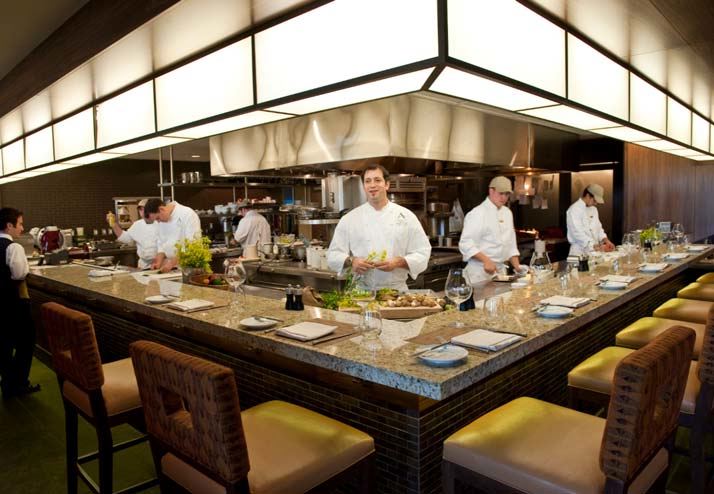 A concierge can fulfill any special interests such as golf at the new 18 hole Chehalem Glenn course in Newberg, winery touring, hot air ballooning, helicopter winery tours, equestrian and cycling winery tours, shopping and galleries, heritage sites and museums including the Evergreen Aviation & Space Musuem in nearby McMinnville. The Newberg Cultural Center is slated for opening in 2010. This is truly an “Allison Wonderland,” that finally brings the full luxury hotel and spa experience to the Willamette Valley with all of Oregon’s working farms and vineyards just outside the door. The Allison is literally a paradise for Pinot lovers. Website: www.theallison.com. Address: 2525 Allison Lane, Newberg. A 45 minute drive from Portland and less than 2 hours drive to the Oregon coast. Phone: 503-554-2525, 877-294-2525. Room Rates: $295 to $1,100 per night. Seasonal packages and specials available. Director of Sales: Laura Crugnale can assist in planning your visit and events (laura@theallison.com).
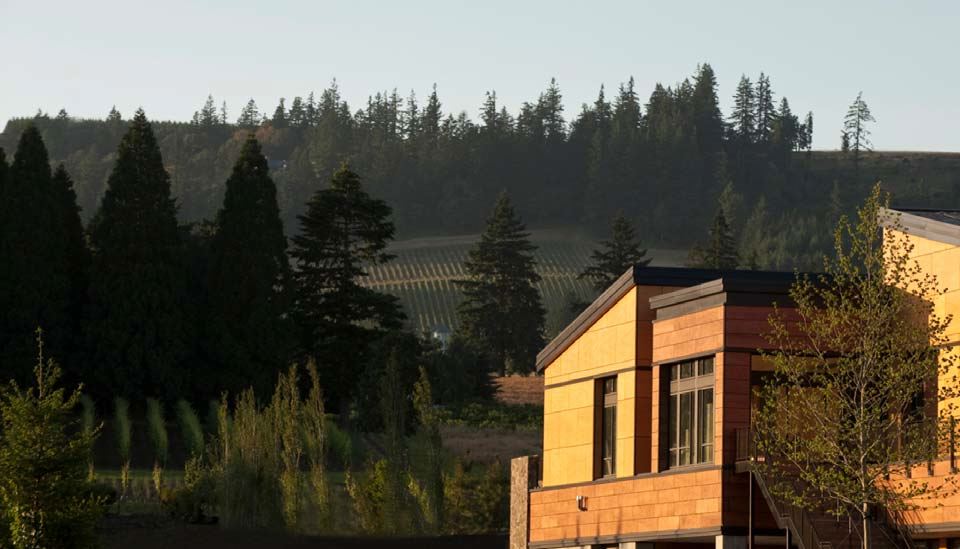
Grand Cru EstatesGrand Cru Estates is an idea that will be welcomed by Pinot Geeks who have dreamed of handcrafting a single barrel of premium Pinot Noir from the region’s finest grapes, assisted by expert winemaking guidance, all at a beautiful, member-only estate winery. Set among the rolling hills of the Yamhill-Carlton District, Grand Cru Estates’ 130 acres includes a 13,000 square foot gravity-flow winery, over 50 acres of Pinot Noir plantings, common rooms for social events and relaxation, and a professional kitchen staffed by a James Beard Award winning chef. The partners in this innovative venture are Laurent Montalieu and Danielle Andrus Montalieu of Solená Cellars and NW Wine Company, and winegrowers Steve and Marian Bailey).
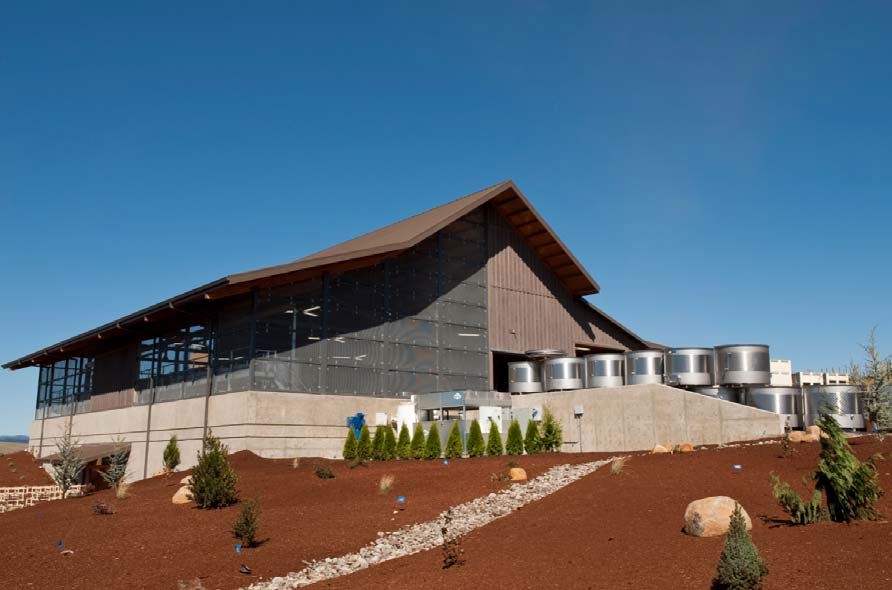 The exterior is reminiscent of a traditional farm featuring stone and weathered wood and includes ecological friendly features like solar power and rainwater collection. The common rooms have heavy, open-beamed ceilings, a rock fireplace is the focal point of the dining and meeting room (below), and broad vineyard views create a sense of rustic luxury. The overall feeling is a return to a simpler time and connection with nature.
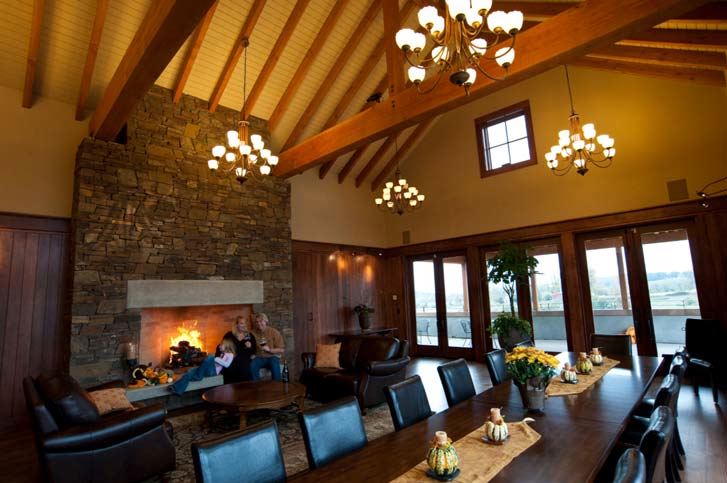 Members of Grand Cru Estates can access premium fruit from any of the six distinctive AVAs in the Willamette Valley. Notable vineyards include Ana, Bailey Estate, Carabella, Domaine Danielle Laurent, Guadalupe, Hyland, Kalita, Willakia, and Zena. Members work one-on-one with the winemaking team of Laurent Montalieu (who also crafts his own Soléna Estate wines at Grand Cru Estates) and Tony Rynders, who together have worked a combined 20 vintages in the Willamette Valley. Both have many accolades and great wines to their credit. (Photo below: Left, Tony Rynders, Right, Laurent Montalieu). Laurent Montalieu came to Oregon as winemaker at Bridgewiew Vineyards and later became a partner and winemaker at Wilakenzie Estate. With his marriage to Danielle Andrus, who helped launch her family’s Archery Summit winery, the couple launched Domaine Danielle Laurent and Soléna Cellars, named after their daughter. They are also partnered owners of NW Wine Company, NW Wine Bar, and Hyland Vineyards. Tony Rynders graduated with a Masters in Viticulture and Enology at University of California at Davis and interned in California, Australia and Italy. He held winemaking positions at Argyle Winery and Hogue Cellars before becoming winemaker at Domaine Serene. During his ten years there, he produced some of Oregon’s most impressive premium Pinot Noirs and Chardonnays. Whether present at each step of the grape harvesting and winemaking process, or simply to enjoy the final wine, each member will receive a single barrel of wine that his or her custom, ultra-premium Pinot Noir that carries the signature stamp of Montalieu and Rynders.
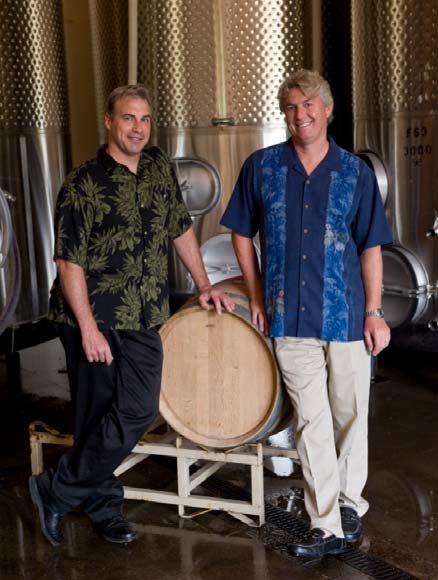 Chef Philippe Boulot directs the culinary arts program at Grand Cru Estates. He is Culinary Director at the Heathman Restaurant in Portland and Executive Chef at the Multnomah Athletic Club. The kitchen at Grand Cru Estates will be a central hub of activity, with cooking classes, winemaker dinners, private member events, and the “Les Amis de Philippe” guest chef series. In time, the estate property will be a source for organic fruits, vegetables, herbs, honey and more, with members having the opportunity to participate in all phases of the food experience from picking the produce to relishing the food and the wine they have created. Three levels of membership are offered that vary in their winemaking involvement, wine quantity and cost. All club members receive the following benefits: (1) Access to the estate, vineyards, winery and gardens, all of which are reserved exclusively for members and their guests, (2) The opportunity to use the estate for private events twice a year, (3) Personal concierge service for planning wine country excursions, (4) Culinary arts events with Chef Philippe Boulot, (5) Educational seminars on winemaking, viticulture, biodynamic farming, and more, and (6) 20% discount on purchasing wines offered through the NW Wine Bar in McMinnville. In addition to these member benefits, Grand Cru Membership includes: (1) Partnership with winemakers Laurent Montalieu and Tony Rynders to produce from one to six barrels (25 to 150 cases) per vintage of custom Pinot Noir with your own name and label, and (2) A one-case wine locker at the winery. Premier Cru Membership includes a yearly wine purchase of a half barrel (12 cases) of wines chosen from Grand Cru Estates winemaker’s blends with your own name and label. Village Membership includes a yearly wine purchase of a quarter barrel (6 cases) of wines chosen from Grand Cru Estates winemaker’s blends. For all membership levels, there is a one-time joining fee of $5,000 that entitles members to all the global member benefits. The yearly wine costs vary according to the membership level, with Grand Cru Members purchasing a full barrel per year at $20,000, Premier Cru Members purchasing a half barrel at $10,000, and Village Members purchasing a quarter barrel at $5,500. For further information or to download the membership prospectus, visit www.thegrandcruestates.com. The phone is 503-662-4730 and email is info@thegrandcruestates.com. The address is 17100 NE Woodland Loop Rd, Yamhill, Oregon, 97148. The inaugural Open House is Thanksgiving weekend, November 27, 28 and 29, 2009. Tours are available by appointment.
Hyland Vineyard EstatesHyland Vineyards dates to the early 1970s when four families (the Kreimeyers, Markleys, Welches and Trenhailes) planted this property located in the Coastal Range foothills southwest of McMinnville. One of Oregon’s oldest and largest vineyards, it has been a source of fruit for such notable wineries as Amity Vineyards, Andrew Rich, Auteur, Belle Ponte, Belle Valle, Bergström, Brooks, King Estate, Rex Hill, Sokol Blosser, and Torii Mor. The 154 acres, with just over 100 acres planted to vines, sits at 600 to 800 feet elevation and commands majestic views of the Williamette Valley including Mt. Hood. Soils are primarily volcanic Jory with some Nekia.
 Over 47 acres are planted to own-rooted old vine Pinot Noir, 22 acres to newer grafted Pinot Noir, and smaller amounts to Chardonnay, Riesling, Gewürztraminer and Muller-Thurgau. Noted viticulturist Joel Myers (Vinetenders) manages the vineyards. The Montalieus partnered with investor John Niemeyer to purchase the Hyland Vineyards with the intent of developing the land not committed to vines into parcels for custom home development. Nine parcels ranging in size from 7.6 to 15.67 acres are available, all in a rural environment that is only reachable by a private road. This is a unique opportunity to develop a homesite on view property adjacent one of Oregon’s iconic vineyards. To visit the property or obtain more information, contact Kendall Bergström at 503-799-2596.
Privé Vineyard It was 2006 when I first made a journey up Chehalem Mountain in Newberg, Oregon, visions of Pinot Noir dancing through my head. As I arrived at a little slice of paradise with a sign out front reading “Rue de Privé,” I knew I had found a gem. Straddled behind a gate and visible on the north and south side of a home sat two well-groomed one-acre vineyards. A sport court and a boules court surrounded by lavender indicated some fun was to be had here. Heading up the driveway, I was taken by the cutest little French-styled winery I had ever laid eyes on. The owners, Mark and Tina Hammond, are American, but their Privé Vineyard is every bit French in name and character. The outstanding Pinot Noir made here also reflects a French pedigree.
 Privé Vineyard is one of Oregon’s smallest Pinot Noir wineries, producing approximately 250 cases of Pinot Noir annually since the first vintage in 2001. This is essentially a private winery for those lucky members of the allocation list. Mark is the vineyard steward and Tina is the winemaker and together they produce one of Oregon’s greatest cult Pinot Noirs that often appears on my end of the year All American Pinot Noir list. The pair joke that the division of labor is convenient because Mark can blame Tina and visa-verse if their is a problem with the outcome of the finished wine. Experienced pickers are hired at harvest, but otherwise this is truly a family run estate. Three wines are released: le nord, from the upper, northern one acre, le sud, from the lower , southern one acre, and a reserve, Joie de Vivre (joy of life) crafted in very limited quantities (half-barrel) and offered in beautifully etched bottles ($90). The Joie de Vivre is only made from the first pressing from each bin of fermented wine based on the belief that the most intense flavors of a grape are next to the skin and gentle pressing draws a juice that is slightly darker and more intense in flavor. The original Müller-Thurgau vines on the property are planted in Jory soil dating to 1980. They were grafted over to Pinot Noir beginning in 1995 with Pommard cuttings taken from Patricia Green at Autumn Wind. The vines are meticulously farmed organically, with only inorganic Roundup used as needed. Organic sulfur is used aggressively starting in the spring to avoid mildew. Precision viticulture allows secondary clusters to be removed by hand leaving one cluster per shoot. Yields are usually 1.5 to 2 tons per acre. The Hammonds' business model is such that a really bad vintage could severely hamper their income. Tina likes to joke, “Mark will have to get a real job.” They kid each other about what one would do. Mark thinks he might pump gas, because he loves outdoor jobs. Tina is a self-taught winemaker who has a knack for crafting Pinot Noir with heavenly balance. Last time I checked in with the Hammonds the grapes were meticulously sorted, 100% de-stemmed, not crushed, and fermented as whole berries in 1.25 ton plastic fermentation bins. A 4 to 5 day cold soak was usual. Usually 100% new French oak barrels are used for le sud which is a more cellar-worthy wine, while le nord is raised in a combination of new (15%), 1, 2 and 3 year-old French oak barrels. The moderate alcohols of the finished wines are appealing.
 Talk about passion for making wine, quality of life and carving out a little niche of heaven. The Hammonds have got it right! Nord or sud, Privé is the answer to an elusive kind of romance. Privé Vineyard website is www.privevineyard.com. The website is in the process being updated and tasting notes on all previous vintages will be added along with the Hammonds' favorite pairing recipes. Customers are now limited to buying 12 bottles of each wine. The allocation list was filled years ago, but you can sign up for the waiting list and hope to get some wine in the future. You may find a bottle occasionally in the secondary market. In 2008, a Bordeaux blend of grapes from Washington, Melange, was produced for the first time ($29). A Pinot port is also available ($40). 503-554-0464.
 2008 Privé Vineyard le nord Yamhill County Estate Grown Willamette Valley Pinot Noir 13.5% alc., $49. · Moderate reddish-purple color in the glass. Lovely aromas of black cherries, black raspberries and a hint of exotic spices. Rich and forthcoming with a blackberry and black cherry core clothed in caressing tannins and possessing the right touch of balancing acidity. More lush and forward than the le sud bottling. A dreamy wine with a creamy texture that is approachable now but will benefit from more time in the cellar. If this wine was a lover instead of a wine, it is the one that would make you abandon your family, leave your job, and forfeit your hard-won position in the community for just one more fling.
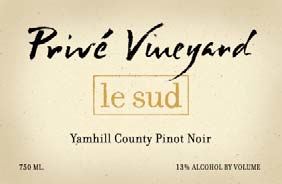 2008 Privé Vineyard le sud Yamhill County Estate Grown Willamette Valley Pinot Noir 13.8% alc., $57. · Moderate reddish-purple color in the glass. The nose exhibits plenty of green garden, Provencal herbs, brier patch and savory spice from the oak. A moderately rich berry core is very tasty with memorable midpalate saturation that picks up intensity with time in the glass. An herbal edge dominates the fruit initially, but the next day from an opened and re-corked bottle the fruit and spice came out to play with complete resolution of the herbal influence. Flat-out delicious the next day. This wine is meant for aging while you drink the le nord, and will be every bit as good in 3 to 5 years. Very good (+).
2005 Privé Joie de Vivre Yamhill County Willamette Valley Pinot Noir 13.0% alc., 132 bottles. · Good color, black cherry and spicy oak (a subtle hint of Brettanomyces). Mid-weight, with a a core of black cherry fruit, dark chocolate and smoky oak. Silky in texture and persistent in length. This wine has aged beautifully and is surprisingly very drinkable at 16 years of age. Score: 91
Small Sips of Oregon PinotBelow are a mix of Oregon Pinot Noirs that are either still in the marketplace (2006 vintage), or recently released (2007 and 2008 vintage). Note the generally low alcohols for easy drinking. There are many solid and a few spectacular wines.
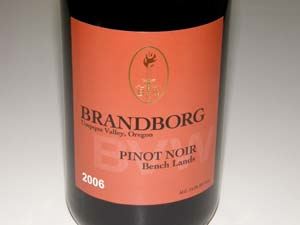 2006 Brandborg Benchlands Umpqua Valley Pinot Noir 14.3% alc., $18, screw cap. From vineyards on the alluvial benches above the Umpqua River. · Light garnet in color in the glass. Shy nose featuring subtle aromas of cherries, oak spice, popsicle stick and herbs. Tasty cherry and strawberry fruit flavors with a hint of red licorice. On the lighter side with supple tannins and a dry finish. A very good daily drinker. Decent (+).
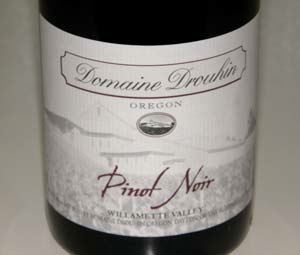 2007 Domaine Drouhin Oregon Willamette Valley Pinot Noir 13.9% alc., $45. · The aromas draw you in with an enticing perfume of red strawberries and cherries, spice, red hots and the slightest hint of oak. Impressive richness for a 2007 vintage Oregon Pinot Noir but still discreetly concentrated. Highly nuanced flavor profile with the focus on red cherry and berry fruit accented by citrus, herbal, mineral and earth notes. The fruit is still a bit reticent showing increasing leg with time in the glass. Soft in the mouth with dusty tannins, a lively spark of acidity and a dry finish. Impeccable balance and impressive vibrancy. This is a dependable wine that is consistently fine with a track record of age ability, regardless of the vagaries of vintage.
 2007 Evening Land Vineyards Seven Springs Vineyard Eola-Amity Hills Willamette Valley Pinot Noir 13.38% alc., $40. The historic Seven Springs Vineyard was originally planted in 1984 in the Eola Hills with additions from 1993 to 1995, now spanning 65 acres. Clones are 114, 115, 777, Pommard and Wadenswil. Aged in 30% new French oak barrels. · This is a strange wine whose medium-weighted cherry and berry fruit is dominated by smoke and old wood on the nose and by an unpleasant oily flavor on the palate. Tasted three times over the past 6 months and discussed with the winemaker, Isabelle Meunier, who recommended giving the wine more time. Unsatisfactory.
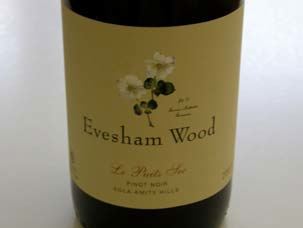 2007 Evesham Wood Le Puits Sec Eola-Amity Hills Willamette Valley Pinot Noir 13.0% alc., $30. From organic grapes grown on non-irrigated vineyards. Unfiltered. · Moderately light garnet color in the glass. Restrained nose with faint red fruits, oak and a floral note. Light and elegant on the palate featuring spiced raspberries and cranberries and a touch of green herbs. Bright acidity creates a refreshing finish. Understated and feminine, with enough charm to satisfy. Very good.
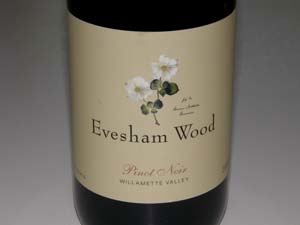 2008 Evesham Wood Willamette Valley Pinot Noir 13.0% alc., $15. Unfiltered. · Demurely scented nose of strawberries, baking spice and a hint of cedar showing more intensity with time in the glass. Tasty core of strawberry, cranberry and cherry fruit in the redder spectrum. Light in weight and elegantly crafted. A highly approachable back porch wine. Decent (+).
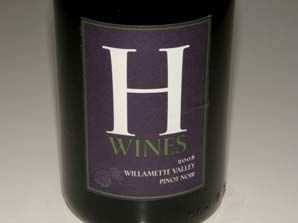 2008 H Wines Willamette Valley Pinot Noir 13.5% alc., $20, screw cap. Second label for Hamacher. · Very shy nose exhibiting aromas of cherries and new sawed wood. Slightly confected core of cherries and cranberries with hi-tone acidity and a noticeable oak feature. Too tart for my taste, but should work fine at the dinner table. Decent.
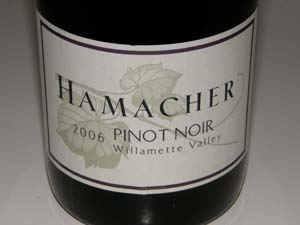 2006 Hamacher Willamette Valley Pinot Noir 13.5% alc., $40. · Earthy black cherry aromas with a sidecar of oak . Pleasing cherry, berry and plum core that is medium-weighted and supported by healthy tannins. Very smoothly textured and stylistically very appealing, but just doesn’t deliver an impact. Decent (+).
iOTA Cellars is a new name on the Oregon Pinot Noir scene. The name, iOTA, refers to small quantity, reflecting the winery’s commitment to small yields, small lots, and small case production. In 1999, Don and Johanna Sandberg moved to Oregon from Minnesota, purchased land in 2000, and began a commercial winery in 2006. The pair have been making wine on a non commercial basis since 2002, initially from purchased grapes and then from their own beginning in 2004. The 2007 wine is the second commercial vintage. Like a number of Oregon winemakers, Johanna gained her basic winemaking knowledge at the NW Viticulture Center in Salem, Oregon along with well-known winemakers Tina Hammond (Privé) and Laura Volkman (Laura Volkman Wines). She interned with the Casteel family at Bethel Heights and Bryce Bagnall when he was the winemaker at Witness Tree. The estate Pelos Sandberg Vineyard (PSV) consists of 11.5 acres in the Eola-Amity Hills AVA planted to Dijon 667 and 777, Pommard and Wädenswil clones. The vines are farmed sustainably and non-irrigated. Grapes are sold to Rex Hill, Bergström Winery and EIEIO & Company. The website is www.iotacellars.com.
 2007 iOTA Cellars Pelos Sandberg Vineyard Eola-Amity Hills Willamette Valley Pinot Noir 13.2% alc., 345 cases, $42. Aged 10 months in 50% new third year air-dried French oak barrels. Unfined and unfiltered. · Moderate reddish purple color in the glass. Aromas of black raspberries, cherries and strawberries with overtones of herbs and smoky oak. Medium-weighted core of darker stone fruits flanked by an oaky, herbal tone that persists on the long finish. Tasted twice. Decent.
Most winemakers dream of having their own eponymous label at some time in their career. Kelley Fox has been crafting wines in Oregon for ten years including terms at Hamacher, The Eyrie Vineyards and Torii Mor. Since 2005, she has been co-winemaker with Scott Wright at Scott Paul Wines, where she emulates the style of elegant Pinot Noir that her mentor at The Eyrie Vineyards, David Lett, taught her. As she notes on her website, www.kelleyfoxwines.com, “What I love most about Pinot is its transparency. I prefer authenticity and even grit to armchair idealism. Pinot does this. There is something so real about it, for the better or the worse.” With the 2007 vintage, along with her father, Gerson Stearns, she has launched Kelley Fox Wines. Two vineyard-designated Pinot Noirs from Momtazi Vineyard and Maresh Vineyard have already created a buzz among pinot aficionados. The tiny production will have a small window of availability. Contact Michael Alberty at www.StorytellerWine.com in Portland, Oregon (503-206-7029, 800-753-2531).
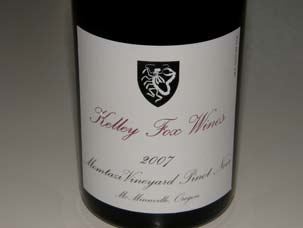 2007 Kelley Fox Wines Maresh Vineyard Dundee Hills Willamette Valley Pinot Noir 13% alc., 69 cases, $49, screw cap. Sourced from self-rooted Wädenswil vines that are over 30 years old. Aged in 30% new French oak barrels. · Light garnet color in glass. Showy nose of strawberries and cherries with a hint of brown spice. Delicately composed, yet delivers plenty of pleasure. Delicate fruit core of strawberries and red cherries accented by spice, clove and graham, gossamer tannins, bright acidity, finishing with impressive aromatic persistence. A well perfumed Dundee Hills debutante that grabs your attention.
 2007 Kelley Fox Wines Momtazi Vineyard McMinnville Willamette Valley Pinot Noir 13% alc., 133 cases, $39, screw cap. Sourced from a 10-year-old block of Dijon 113 and 115 clones. Biodynamically-farmed vineyard. · Light garnet color in glass. Mineral-infused aromas of cherries with a whiff of iron, wet stone and funk. Discreetly composed core of earth-dusted dark red fruits, especially bright, juicy cherries. Moderate tannins with balancing acidity. Very good and recommended.
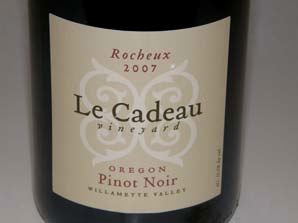 2007 Le Cadeau Vineyard Rocheux Willamette Valley Pinot Noir 13.5% alc., $47. Sourced from the west side of the Le Cadeau Vineyard and vinified by the Chehalem winemaking team including Henry Peterson-Nedry. · Scents of raspberries and plum, sage and herbs from Provence, and a hint of green veggies. Pleasing core of black cherries and plums with hints of cola, brier patch and green beans. Moderately firm in structure with noticeable tannins and a smooth mouth feel. Decent.
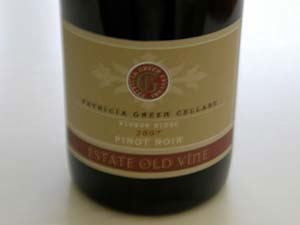 2007 Patricia Green Cellars Ribbon Ridge Estate Old Vine Willamette Valley Pinot Noir 13.6% alc., $39. From a 26-acre vineyard with non-irrigated vines dating back to 1984. Mix of clones. · Moderately deep garnet color in the glass. Aromas of dark stone fruits, oak, tobacco and a little barnyard. Oak-kissed black fruits on the palate with an herbal underpinning. Nicely balanced with soft tannins and a good acid cut on the finish. Decent, but not exciting.
 2007 ROCO Private Stash Chehalem Mountains Willamette Valley Pinot Noir 13.5% alc., 300 cases, $70. Fifth vintage from the Wits’ End Vineyard farmed by the Solle’s family. · Reticent scents of black cherries, oatmeal and oak. Flavors veer to the redder fruit spectrum with soft tannins and some citrus peel evident on the persistent finish. Copious pinotypicity. Not up to the last two vintages but delivers plenty of pleasure. Very good.
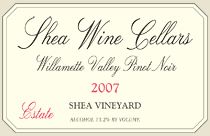 2007 Shea Wine Cellars Estate Shea Vineyard Willamette Valley Pinot Noir 13.2% alc., $38. A blend that expresses the overall vineyard and contains every clone grown at Shea Vineyard (several Dijon clones, Pommard and Wädenswil). Estate grown, produced and bottled. · Restrained aromas of cherries, strawberries and a hint of toasty oak. Moderately fat in the mouth featuring earth-dusted dark stone fruits and berries with supple tannins and a lively acid tang on the oaktinged finish. Decent.
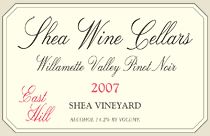 2007 Shea Wine Cellars East Hill Shea Vineyard Willamette Valley Pinot Noir 14.2% alc., $55. From five different blocks, 60% Dijon clones and 40% Wädenswil clone. Aged 10 months in 43% new French oak. · Deep reddish-purple color in the glass. Flashy aromas of stone fruits and berries, plum sauce and spice. The fruit-infused nose really gets your attention. Rich, full, sweet and beautifully complex array of stone fruits and berries on the palate with an appealing underlying earthiness. Real density here and one of the boldest Oregon Pinot Noirs tasted from the 2007 vintage. This wine offers a clear and unmistakable sense of Yamhill-Carlton terroir.
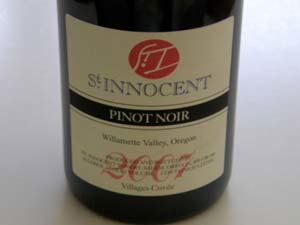 2007 St. Innocent Villages Cuvée Willamette Valley Pinot Noir 13.5% alc., $22. · Very enticing nose of cherry and berry fruits, nicely spiced with a wooded forest note as well. On the palate the melange of strawberries, raspberries and cranberries is light in weight but tasty augmented by a tinge of oak, herbs and spice. An ethereal wine with a velvety texture and a dry, refreshing finish. Always a dependable and excellent value wine from St. Innocent. Decent (+)
 2006 The Eyrie Vineyards Reserve Original Vines Dundee Hills Pinot Noir 13.5% alc., $55. Sourced from estate vines planted between 1967 and 1973. · Light ruby color in the glass. Aromas of fresh cherries, toast and herbs. Moderately light and elegant with appealing flavors of cherries and strawberries with an accent of savory herbs. Silky in texture with a good grip of acidity and mild tannins. An austere style that will appeal to lovers of delicate Pinot Noir. Very good (-).
Wine Competitions: Who Benefits?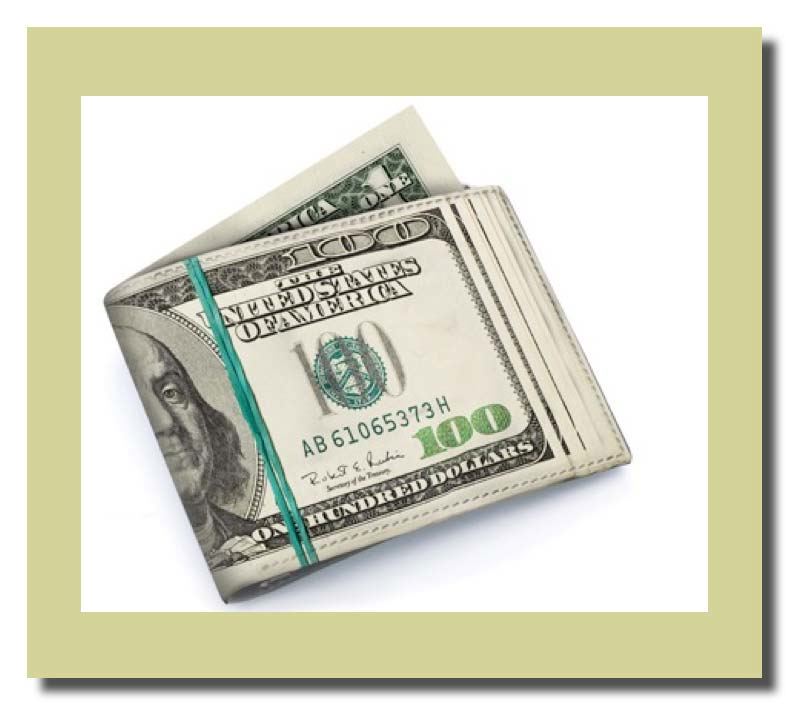
Wine enthusiasts should read the feature that was published on November 14 in the Wall Street Journal: The article, “A Hint of Hype, A Taste of Illusion,” reviews two well-publicized studies by statistician Robert Hodgson that support the notion that repeated judgments of the same wine, by the same wine expert, are so widely disparate that the ratings and medals given to wines are meaningless. When Hodgson studied the results of multiple wine competitions, he found the medals were spread around at random, essentially what one would expect by chance alone. Winery owners are well aware of this, and many of them admit to sending their wine to many different competitions because the wine, assuming it is good, will eventually win a gold medal by chance if submitted to enough competitions. Winery owner and winemaker, Richard Alfaro, of Alfaro Family Vineyards in Corralitos, California, pointed out to me the hard reality about wine competitions. He noted that most of them are profit driven, not passion driven. The San Francisco Chronicle Wine Competition, for example, is a prestigious event and receives almost 5,000 wines for judging. That amounts to $300,000 in entry fees alone. In addition, multiple bottles of the same wine have to be submitted by the winery for judging. After the judging, a public tasting of the medal winners is held in which the wineries pour their wines for free. Last year the Chronicle sold 5,000 tickets ($45 in advance, $80 at the door) amounting to at least another $225,000. Most of the people working the event, including the judges, are volunteers and much of the food, water and logistics is either donated or supported by sponsors. On top of this, if a winery wins a Gold Medal, the Chronicle strongly encourages the awarded winery to advertise in the annual San Francisco Chronicle Wine Competition results issue, contributing significant advertising revenue to the organizers. When you look at the numbers, it is easy to see why there is a tremendous number of wine competitions. So who really benefits from wine competitions? Wineries may not profit because the expenditure is significant if they enter multiple competitions, diluting the potential value of added sales revenue. If a wine does win a Gold Medal, it may quickly sell out, but other wines in the winery’s portfolio may suffer from perceived relative inferiority. Boutique wineries rarely benefit because they simply cannot afford to enter several competitions and often choose to enter none at all. The wine consumer derives little benefit because the results are not widely publicized and a majority pay no attention to medals won in wine competitions. It is wine critics’ scores that draw their attention and drive sales. Those who benefit the most from wine competitions are the organizers who pad their wallets through a falsely perceived premise that medals are awarded by judges who are infallible. Your comments are welcome: prince@princeofpinot.com. |